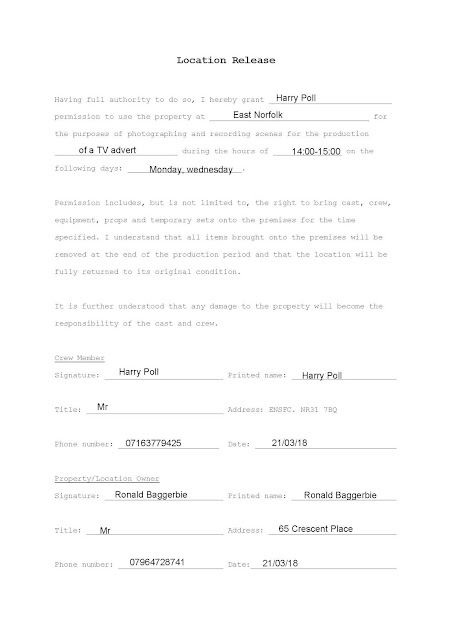Documentary ‘mini-task’
Introduction
A documentary is a term to describe a non-fiction movie that in some way documents or captures reality. Documentaries can be funny, disturbing, ironic, inspirational, amusing, and shocking or any combination.
Expository Documentaries
These types Speak directly to the viewer, often in the form of an authoritative commentary employing voiceover or titles, proposing a strong argument and point of view.
Key features:
- -A commentator
- -Rhetorical questions
- -Facts
- -Opinions
- -Persuasive techniques
They are often biographical, historical or talk about a certain event. Some more genres of expository documentaries are science, health, nature, etc. They also normally include footage, interviews or pictures exclusive to the documentary.
One example of an expository documentary is the ‘Creation of the universe’ made in 2003. The genre of this documentary is science and it is very informative. Stylized, high-contrast images paired with creative motion graphics bring life to this scientific documentary and help illustrate the more abstract concepts being discussed. Narration explains things like the ‘big bang’ and the events following it, if Mars used to hold extraterritorial life and many more things.
Another one of my examples of an expository documentary is ‘Secrets of the Egyptian Pyramids’.
Observational documentaries
Normally, in observational documentaries, the documentary maker follows the person around to observe the events that happen in their life.
Key features:
- -Informal equipment (hand-held cameras)
- -Usually no interviews or voice – overs
- -Long takes
Observational documentaries strive for cinematic realism and even a camera crew of two could shoot almost anywhere with available light and follow actuality as it unfolded.
One example of an observational documentary is ‘High school’ made in 1968 by Frederick Wiseman whom is considered to be the master of observational cinema. ‘High school’ shows a typical day for a group of students at Northeast High School in Philadelphia, Pennsylvania. It was one of the first observational documentaries made.
Another example is ‘MTV cribs’. This isn’t a normal, raw documentary, however, it still classes as an observational documentary because it follows celebrities around as they do a tour of their house. The producers edit in music to make it more interesting and speed up clips to help show the less interesting parts of the house quicker.
Interactive documentaries
These documentaries differ from the more traditional forms—video, audio, photographic—by applying a full complement of multimedia tools. The interactive multimedia capability of the Internet provides documentations with a unique medium to create non-linear productions that combine photography, text, audio, video, animation, and info graphics based on real time content.
One example of an interactive documentary is ‘becoming Human’. Becoming Human is an interactive documentary experience that gives you a Journey through four million years of human evolution.
Another example is ‘Welcome to Pine Point’ made in 2011, it is an interactive web documentary by Michael Simons and Paul Shoebridge. The website explores the memories of residents from the former mining community of Pine Point, Northwest Territories, as well as how we remember the past.
Reflective documentaries
The reflexive style of documentary is usually associated with experimental documentaries, where the viewer is just as interested about how the film is constructed as they are the actual content.
Key features:
- -Truthful
- -Focus on realism
- -Try to how things exactly how they happen (without editing)
As the film maker narrates and addresses the audience, viewers opinions are swayed to those of the narrator’s.
One example of a reflective documentary maker is Louis Theroux. Documentaries like ‘Law and Disorder in Philadelphia’ made in 2008, ‘Louis and the Nazis’ made in 2003, ‘Behind Bars’ made in 2008 and many more great examples of reflective documentaries.
Performative documentaries
The performative mode of documentary is the direct opposite of the observational where unobtrusive observation of the subject is the director's aim. Performative documentary emphasizes the filmmaker's own involvement with the subject. The persuasive performative filmmaker becomes a personal guide who shows it and tells it like it is with raw emotion.
One example of a performative documentary is ‘Paris Is Burning’ made in 1991 by Jenny Livingston. It explores the ball culture of New York City and the African-American, Latino, gay, and transgender communities involved in it. It’s a thoughtful exploration of race, class, gender, and sexuality in America and in 2016, the film was selected for preservation in the United States National Film Registry by the Library of Congress as being ‘culturally, historically, or aesthetically significant’.
Conclusion
In my opinion, a documentary should be factual and accurate. I believe that the film maker should present all the information they can with different opinions and views and then the viewer should make his choice or opinion on the topic from that. However, if the documentary isn’t about an important problem or topic, I think they can be factual and less accurate as long as the documentary makes up for it though comedy.

Comments
Post a Comment